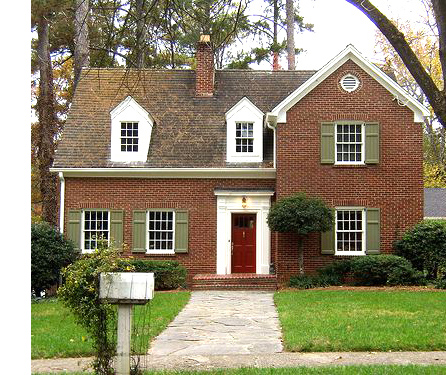A Seldom-Used Option
 In 1982 Alice and Teddy Washington bought their dream house in the Royal Oak suburb of Detroit. The cozy two story, three-bedroom brick structure was the perfect place to raise their two children Maise and William.
In 1982 Alice and Teddy Washington bought their dream house in the Royal Oak suburb of Detroit. The cozy two story, three-bedroom brick structure was the perfect place to raise their two children Maise and William.
Within walking distance of the train station, Teddy had a short commute to his job downtown, while Alice used the family car to drive the kids to school and work her own job at the local library.
Their backyard was small, but it was enough to accommodate an above ground pool which was a hit during summertime, and a small incline that ended at the property’s fence which was great for sledding in winter.
The Washington’s lived the American Dream, and by making prudent financial decisions they were able to fully pay for both Maise and William’s college education at good state schools.
With the economic downturn, however, Teddy decided the wisest course of action would be to accept early retirement at the age of 62 in 2014.
As they owned their home outright, this combined with Alice’s coming government pension would be sufficient to see them through their retirement.
Then in the winter of 2015, they visited Maise and her new husband at their home in the Coral Gables section of Miami. Teddy immediately fell in love with the climate and laid back atmosphere, not to mention the Latin cuisine, which he had never tried before.
Alice loved being with her daughter again, and when Maise revealed on Christmas Eve she was pregnant with her first child, Alice felt a deep pull at her heartstrings. She wanted very much to be near Maise to help her with the coming baby.
The question was not whether the Washingtons wanted to move to Miami, it was how could they do it?
The most obvious option was to sell the family home back in Michigan and use the money to buy another house in Miami. This scenario presented two main problems.
The housing market in an exploding town like Miami was quite different then back in Michigan. The only properties in the Washingtons’ price range were in the far flung suburbs, practically in the Everglades.
Considering the notorious South Florida traffic, this would totally defeat the purpose of being close to family.
The other problem was income. Although their pensions were enough to live on, they were most likely not going to meet qualifying levels for a new mortgage.
For a year they tried somehow to make it work. They were even considering buying a condo instead of a house when their accountant brought up the subject of a reverse mortgage.
Alice and Teddy were initially confused as a reverse mortgage, as they understood it, was a loan based on the equity in the house you already owned. Typically, seniors used a reverse mortgage to get monthly cash payments to supplement their retirement incomes.
Their accountant explained that there was another type of reverse mortgage called an HECM For Purchase. This reverse mortgage variation was introduced in 2008 and was specifically designed for seniors who wanted to switch houses or relocate to a different area.
A HECM for Purchase is essentially a reverse mortgage on a new house. Most importantly, it is not subject to the same income qualifications as a forward mortgage. Here’s how it works:
Typically the HECM for Purchase will cover 47%-52% of the new home’s cost. Seniors must cover the rest on their own, either through sale of their current house or with savings.
This substantial down payment combined with the amount of the reverse mortgage pays for the new house outright.
So instead of using the reverse mortgage loan to draw monthly payments on the equity of your existing house, you use the equity created by your down payment and the new house’s value to draw the loan as one lump sum to pay off the rest of said house.
If that seems confusing to you, you’re not alone. Only 3.3% of reverse mortgage customers use this useful program to obtain a new house.
But when the advantages become apparent, that percentage will no doubt rise.
In the meantime all you need to know is this: If you are 62 or older and wish to buy a new house but don’t think you’ll be able to manage a traditional forward mortgage, you can use the money from the sale of your current house combined with an HECM for Purchase to buy the new house without income qualification restrictions.
And like a traditional reverse mortgage, payment of the loan is deferred until the borrower passes away or leaves the property, the home is sold, or the borrower fails to meet property obligations. Once this happens, the heirs have several options open to them.
 In the spring of 2016 Alice and Teddy sold their Royal Oak homestead and used the proceeds combined with a HECM for Purchase in just this fashion.
In the spring of 2016 Alice and Teddy sold their Royal Oak homestead and used the proceeds combined with a HECM for Purchase in just this fashion.
Because of this program, they are now living in the warm Miami suburb of Westchester just a 15-minute drive from Maise and her family.
And because they have no mortgage payments, they are living comfortably off their savings and pensions, although Teddy seems to be spending the majority of his on Cuban food.
If you are 62 or over, and are interested in availing yourself of this excellent program, head on over to our advertising partners American Advisors Group. They will send you a free information kit that tells you everything you need to know about reverse mortgages.
You can also read our review here of the 10 Best Reverse Mortgage Companies of 2018.